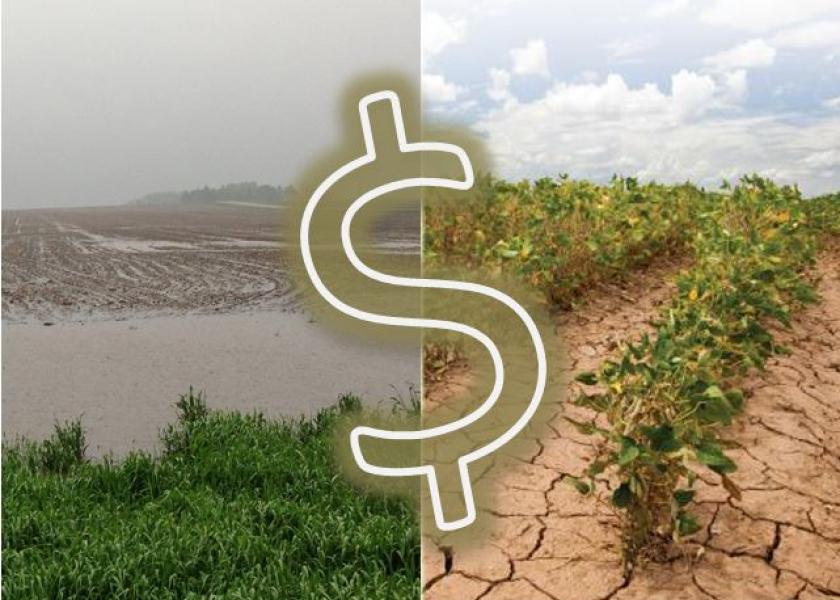Crop Insurance Affordability at Heart of FARMER Act

The move to make higher levels of insurance coverage more affordable for U.S. farmers would be a big step toward decreasing their financial risks, according to Harold Wolle, president of the National Corn Growers Association (NCGA).
Wolle discussed the new Federal Agriculture Risk Management Enhancement and Resilience (FARMER) Act with AgriTalk Host, Chip Flory, on Tuesday.
“We are entering a period of lower profitability, and that increases our risks,” Wolle said. “To have these tools in our toolbox is very important.”
The FARMER Act legislation, introduced last week, was sponsored by U.S. Senator John Hoeven (R-ND), a senior member of the Senate Agriculture Committee and Ranking Member of the Senate Agriculture Appropriations Committee.
Hoeven said The FARMER Act improves crop insurance affordability by increasing premium support for the highest levels of coverage and enhancing the Supplemental Coverage Option (SCO). Making higher levels of coverage more affordable will shrink producer deductibles and reduce the need for ad-hoc disaster assistance in the future, Hoeven said, in a summary of the bill.
“The bill does not require producers to choose between enhanced crop insurance coverage and commodity support programs, allowing them to make decisions that work best for their operations,” Hoeven added.
Wolle, who farms near Madelia, Minn., said the legislation, if approved, would increase the premium support for revenue protection and yield protection policies. That would include:
- increasing premium support for certain revenue protection and yield protection policies at the 80% coverage level from 68% to 77% and at the 85% coverage level from 53% to 68%;
- increasing premium support for the Supplemental Coverage Option (SCO), an area-based plan, from 65% to 80% and increase the SCO coverage level from 86% to 90%; and
- directing the Risk Management Agency to conduct a study to improve the effectiveness of SCO in counties larger than 1,400 square miles.
“As you well know, crop insurance is the No. 1 risk management tool that our nation's corn farmers have, and NCGA is always supportive of improving crop insurance,” Wolle said.
In addition to NCGA, the bill has the endorsement of more than 20 farm groups including the American Farm Bureau Federation, National Cotton Council, American Soybean Association, Crop Insurance Professionals Association and the National Association of Wheat Growers.
Next Steps On The FARMER Act
The proposed legislation by Sen. Hoeven is essentially a so-called marker bill that would get the proposed insurance enhancements in front of Congress for consideration. If the legislation was approved, it would then go into effect under the auspices of the next farm bill.
Wolle told Flory he is hopeful progress will be made on the farm bill yet this spring.
“It’s not like they’re saying, ‘Hey, we're not going to deal with this until after the election.’ So I'm very glad that Chairman Thompson and everybody involved on the House and Senate Ag Committee are wanting to get this done.”
House agriculture chairman Glenn “GT” Thompson said last week that he aims to push a bipartisan farm bill through “a key committee” before the end of May.
Agriculture leaders say action on the farm bill is needed because a one-year extension of the 2018 farm bill will expire on September 30, 2024.
Check out CPA Paul Neiffer's article here on How Not To Do Crop Insurance
NCGA Addresses Crop-Protection Tools
During the AgriTalk discussion, Flory asked Wolle for insights on a petition Corteva filed recently with The International Trade Commission.
“You were in D.C. not that long ago, testifying on why imports of 2,4-D and other crop protection tools are important. Tell us about that trip,” Flory said.
Wolle said Corteva filed the petition with the International Trade Commission to have anti-dumping and countervailing duties applied to imports of 2,4-D acid from India and China.
“An anti-dumping duty is levied when a product is being imported below the cost of production. A countervailing duty is implemented when a country's government unfairly subsidizes the production of that commodity,” Wolle explained.
“Corteva is maintaining that both of those situations apply to imports of the 2,4-D acid from both of those countries. If that would happen, it would increase the cost of 2,4-D to our nation's corn and soybean farmers, to all of our farmers,” Wolle added.
While Wolle said corn growers “don’t use a lot of 2,4-D,” it’s an important weed-control tool and plays an important role in conservation farming efforts.
“If we're going to burn down the weeds before we plant, 2,4-D is one of the staple pesticides used to control those broadleaf weeds. So, it's a very important, long-time chemical that we need to have in our toolbox and at a reasonable price," Wolle said. "Here again, this cost-price squeeze affects the nation's farmers. This becomes more and more important that we have access to these tools at affordable prices.”
More news on early-season weed control for 2024 available here: 3 Tips For Better Weed-Control Outcomes This Season
Tariff Imbalance With Brazil
Flory asked Wolle whether efforts to remove or reduce Brazil’s tariffs on the imports of U.S. ethanol are going to happen.
“I don't know,” Wolle replied. “We need to emphasize that again and again. Brazil charges us an 18% tariff for our ethanol going into their country and we only charge them 2.4%. That's not right.”
See more about the ag boom in Brazil here: Brazil's Biggest Growing Sector: Agriculture
The complete AgriTalk discussion is available here:







